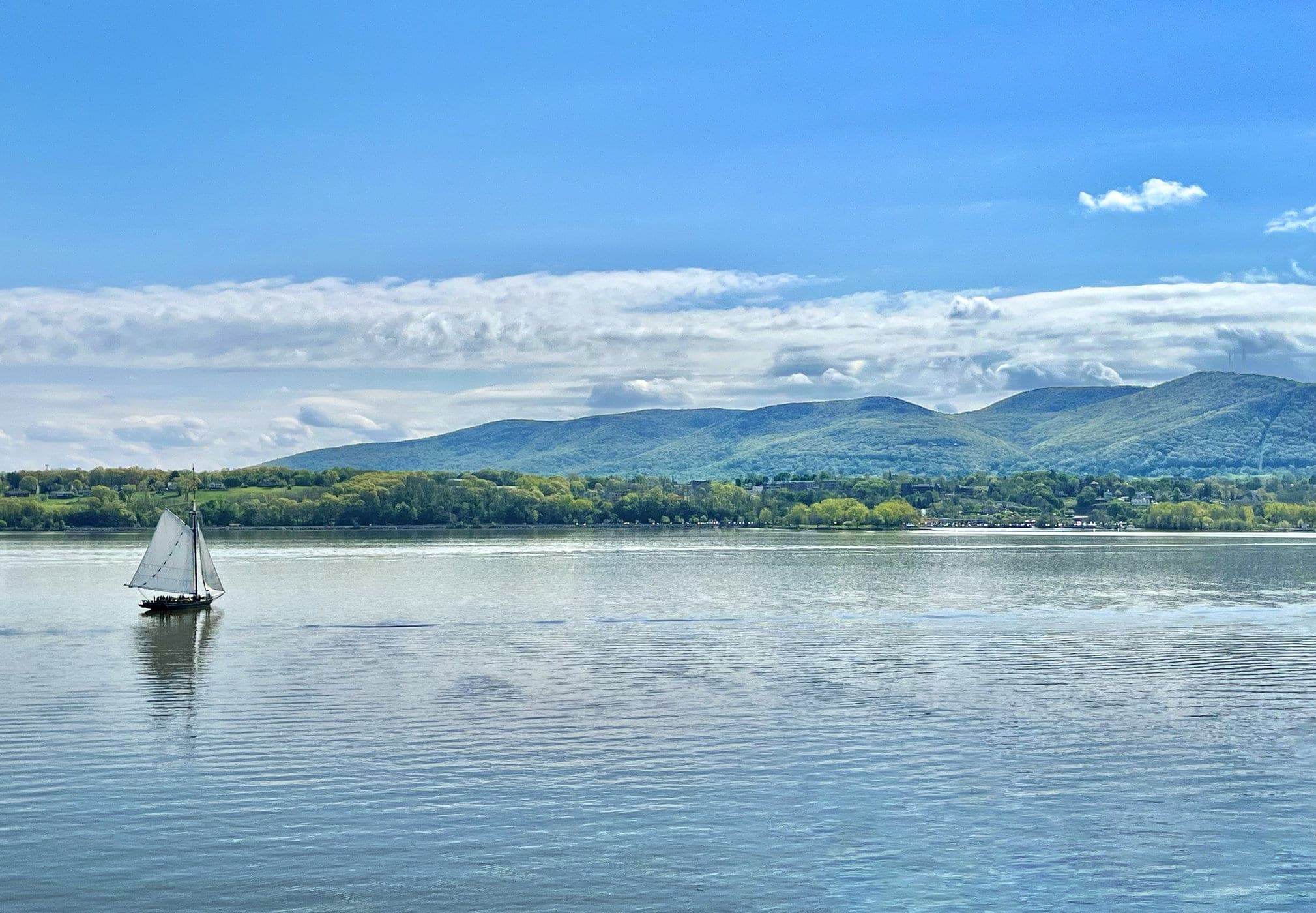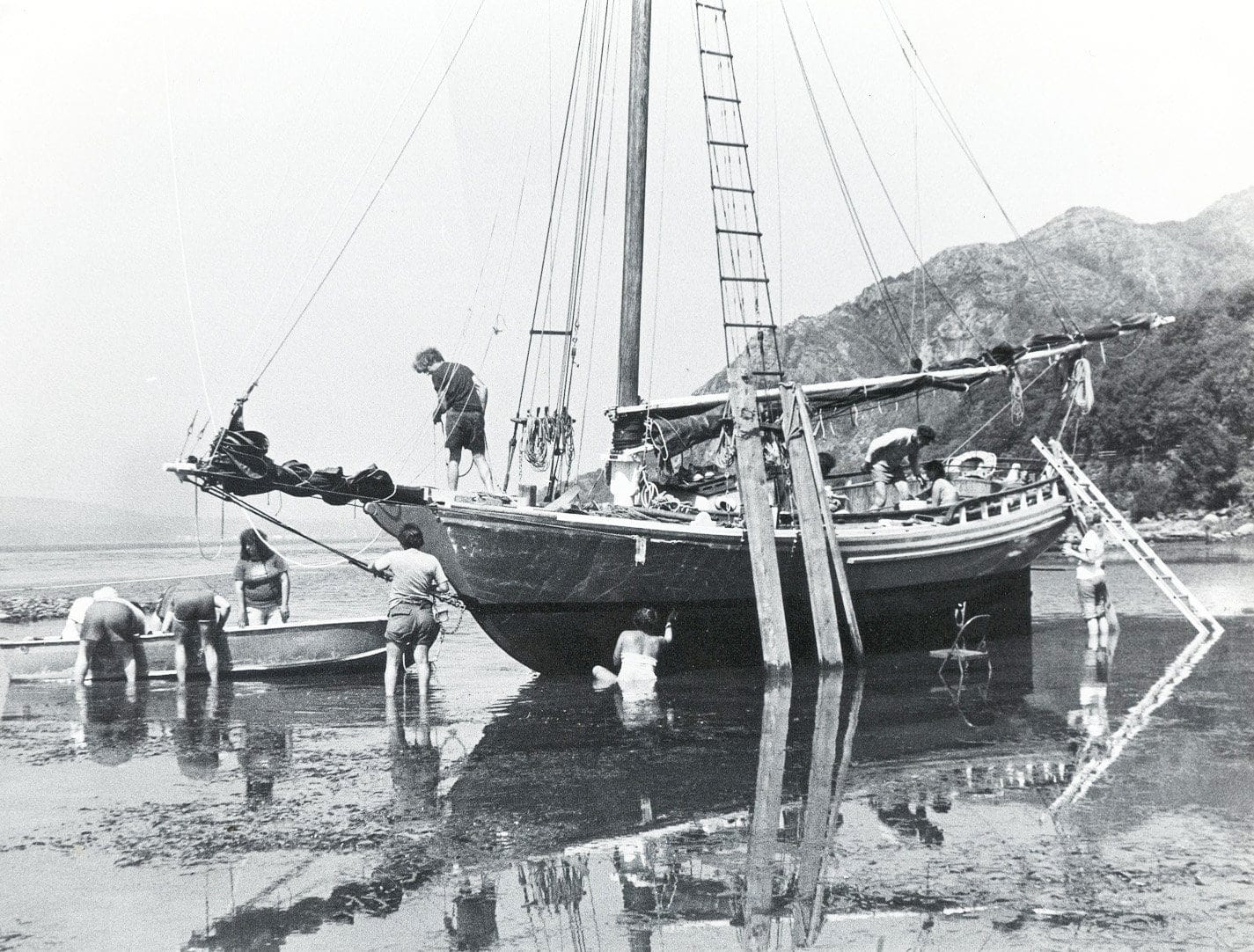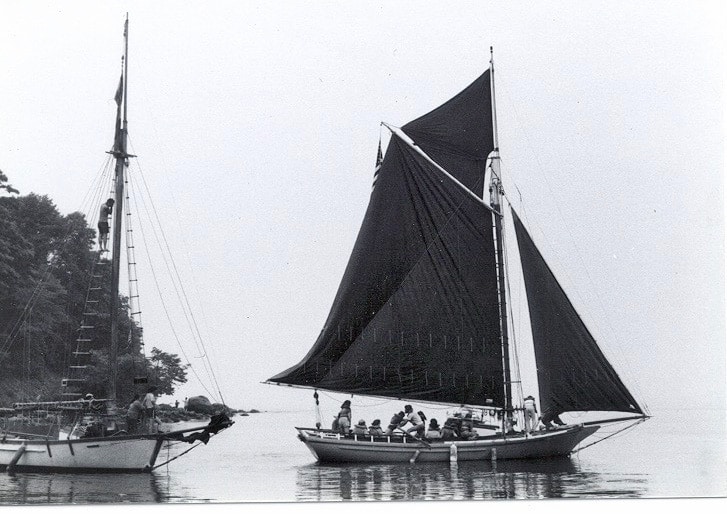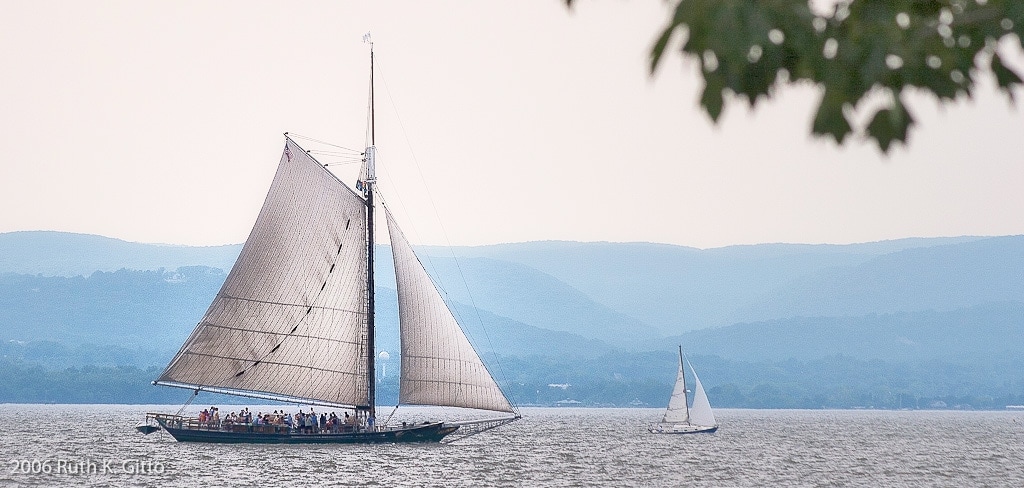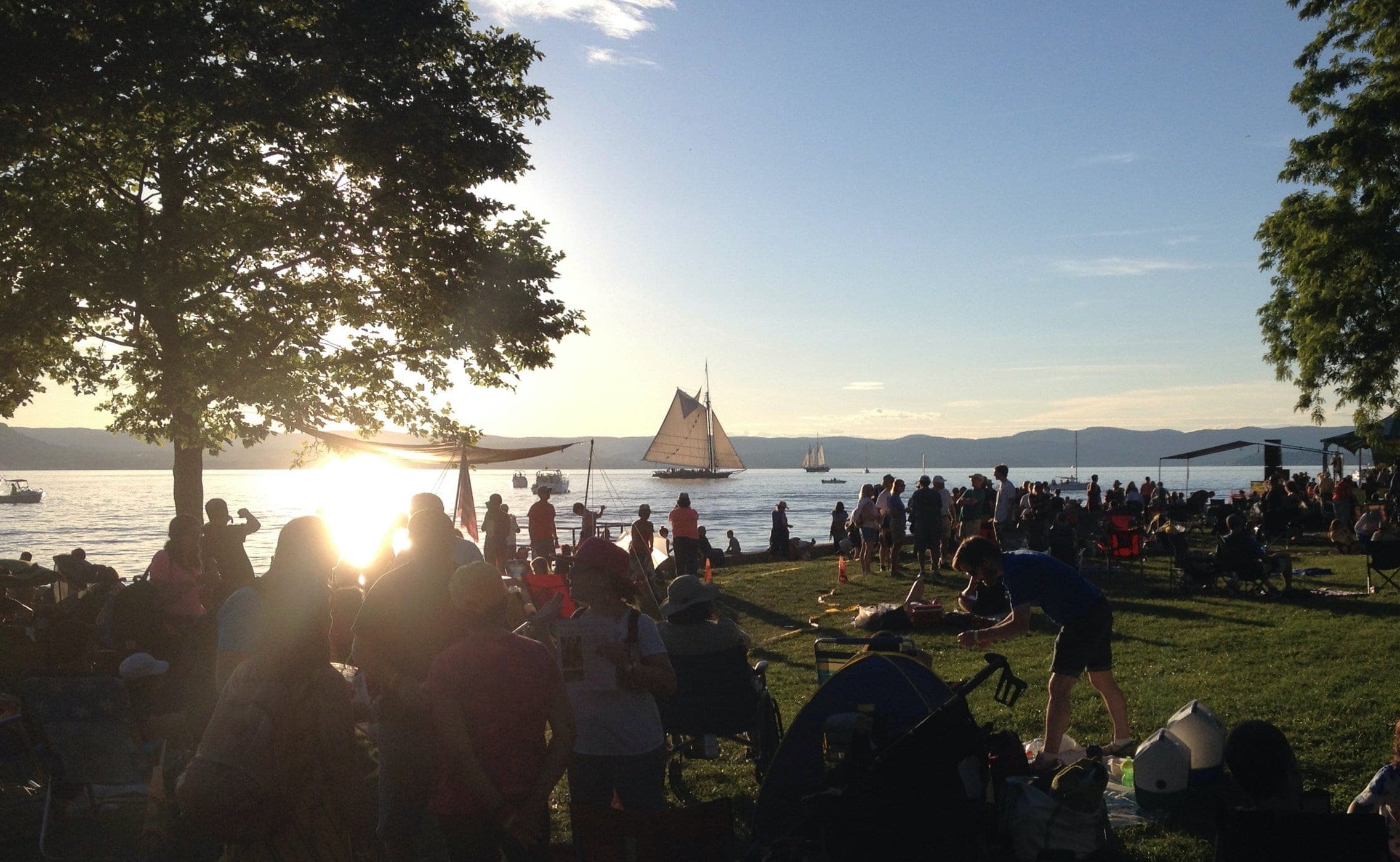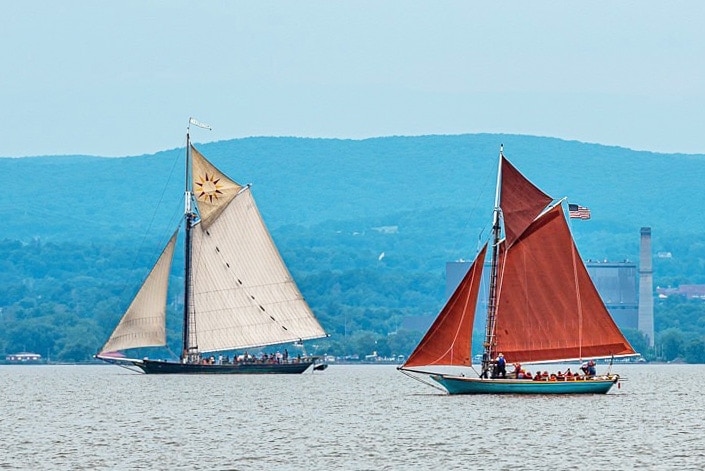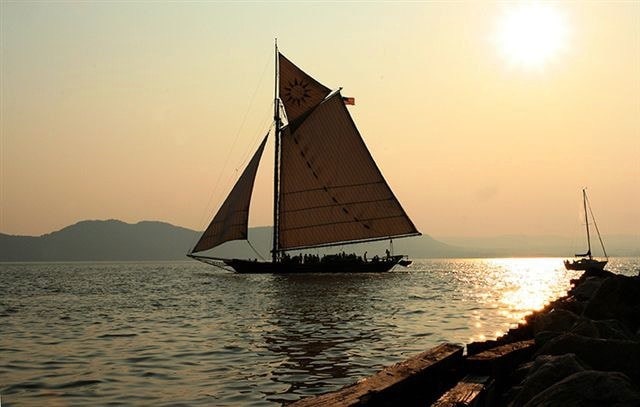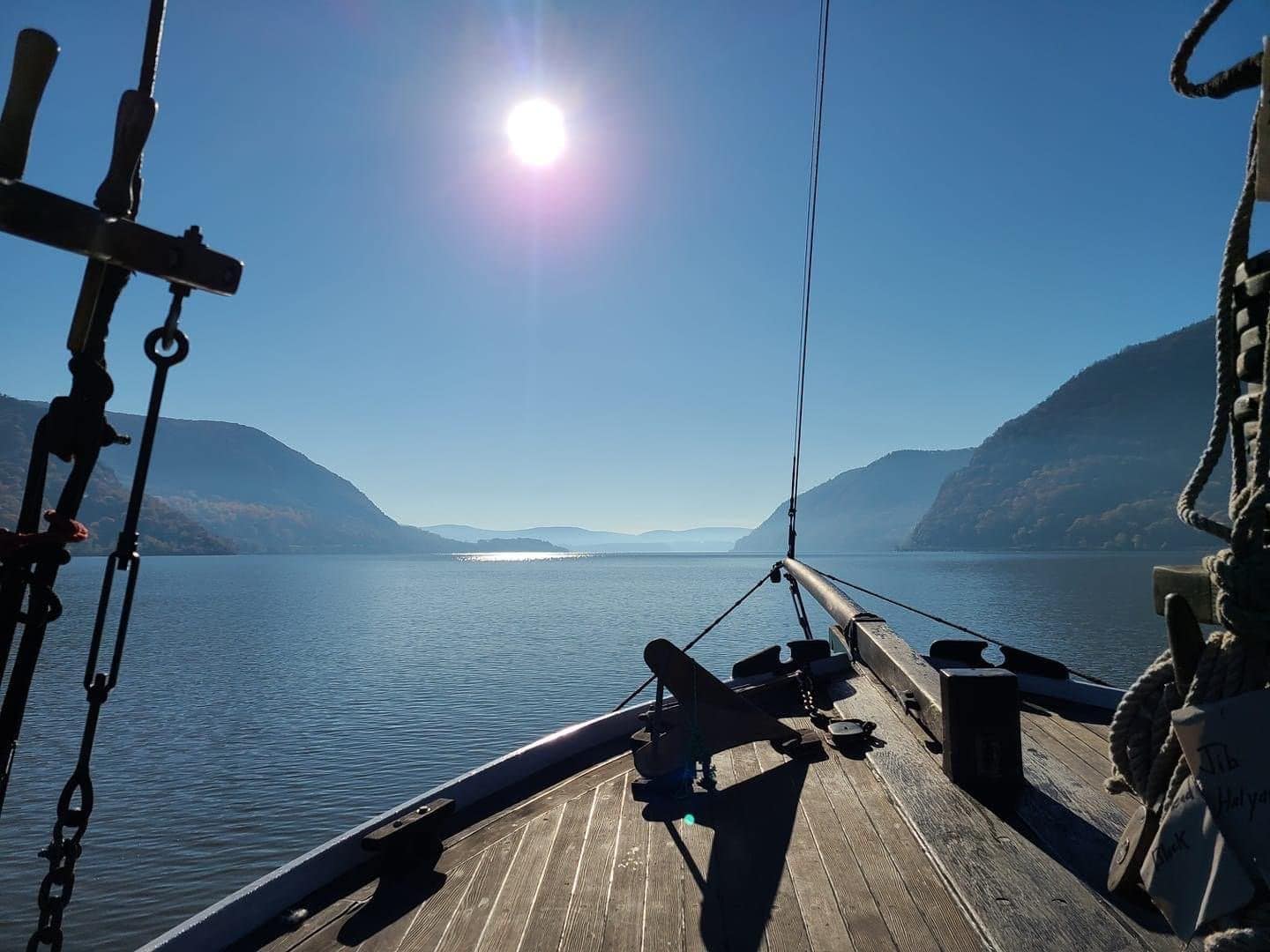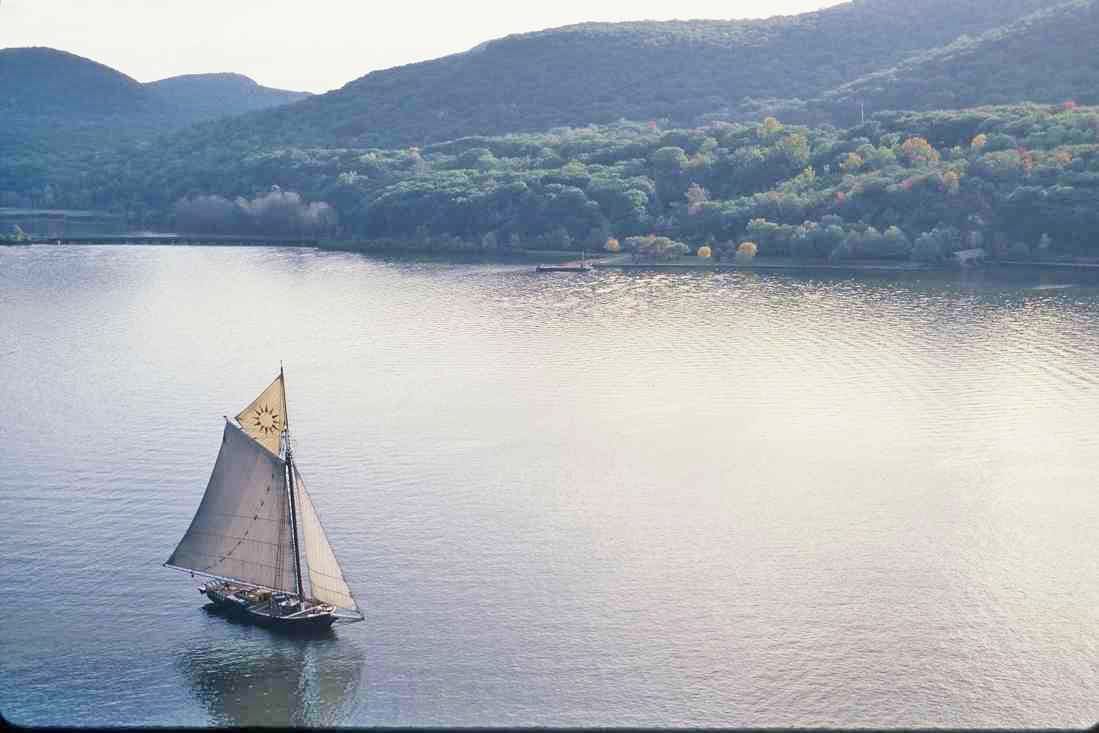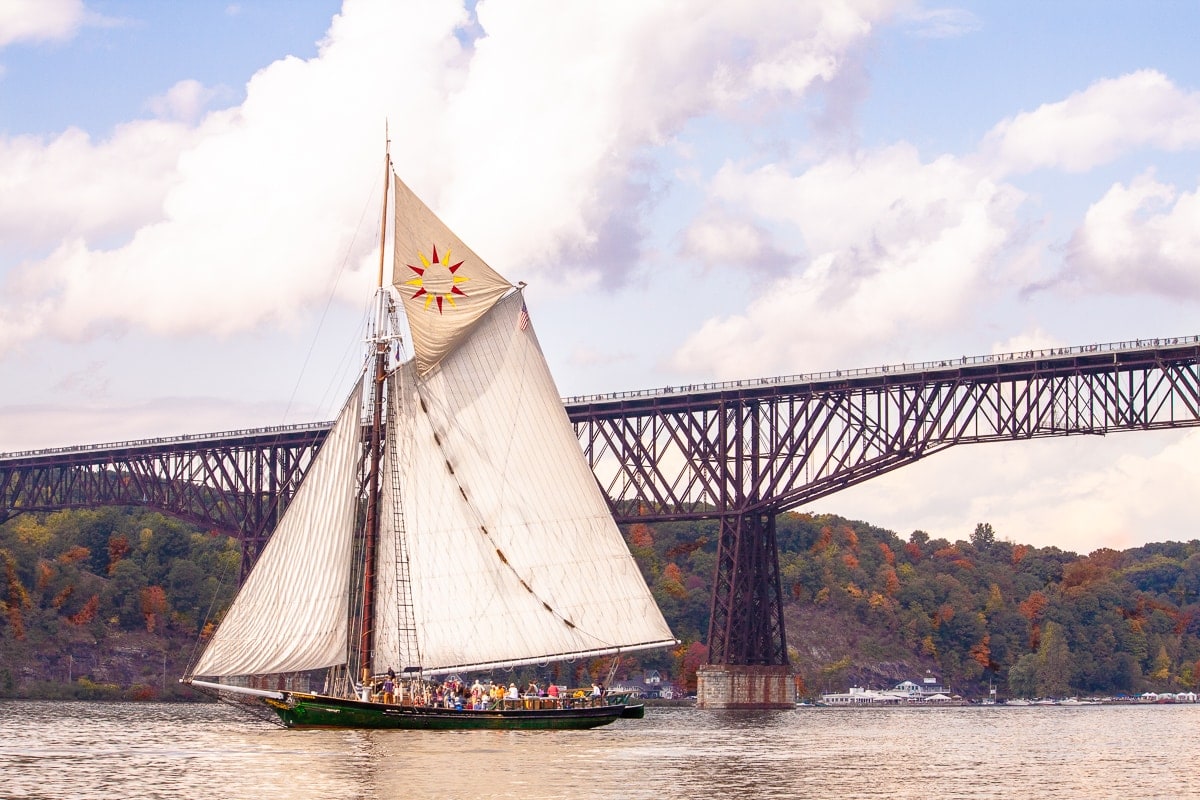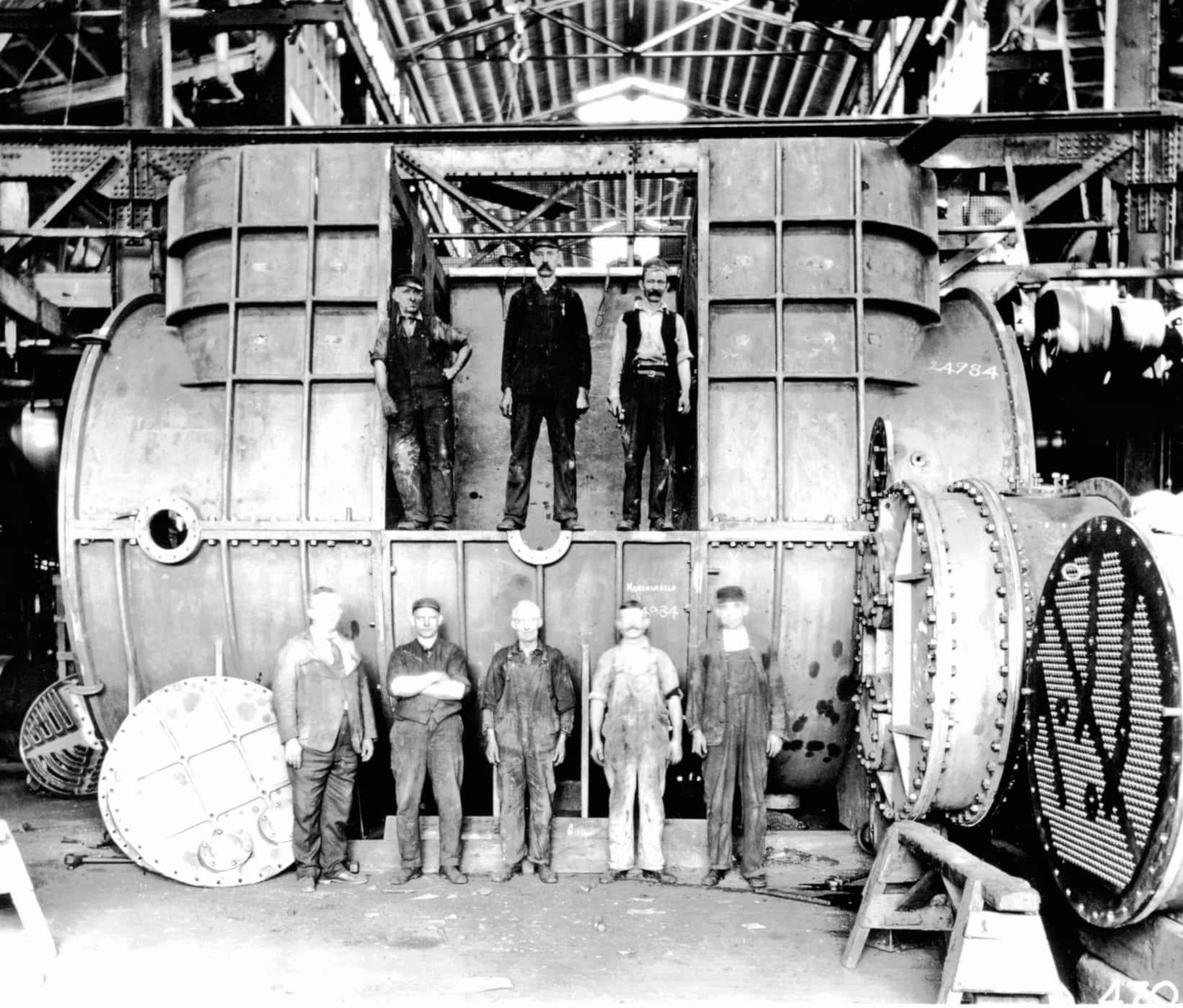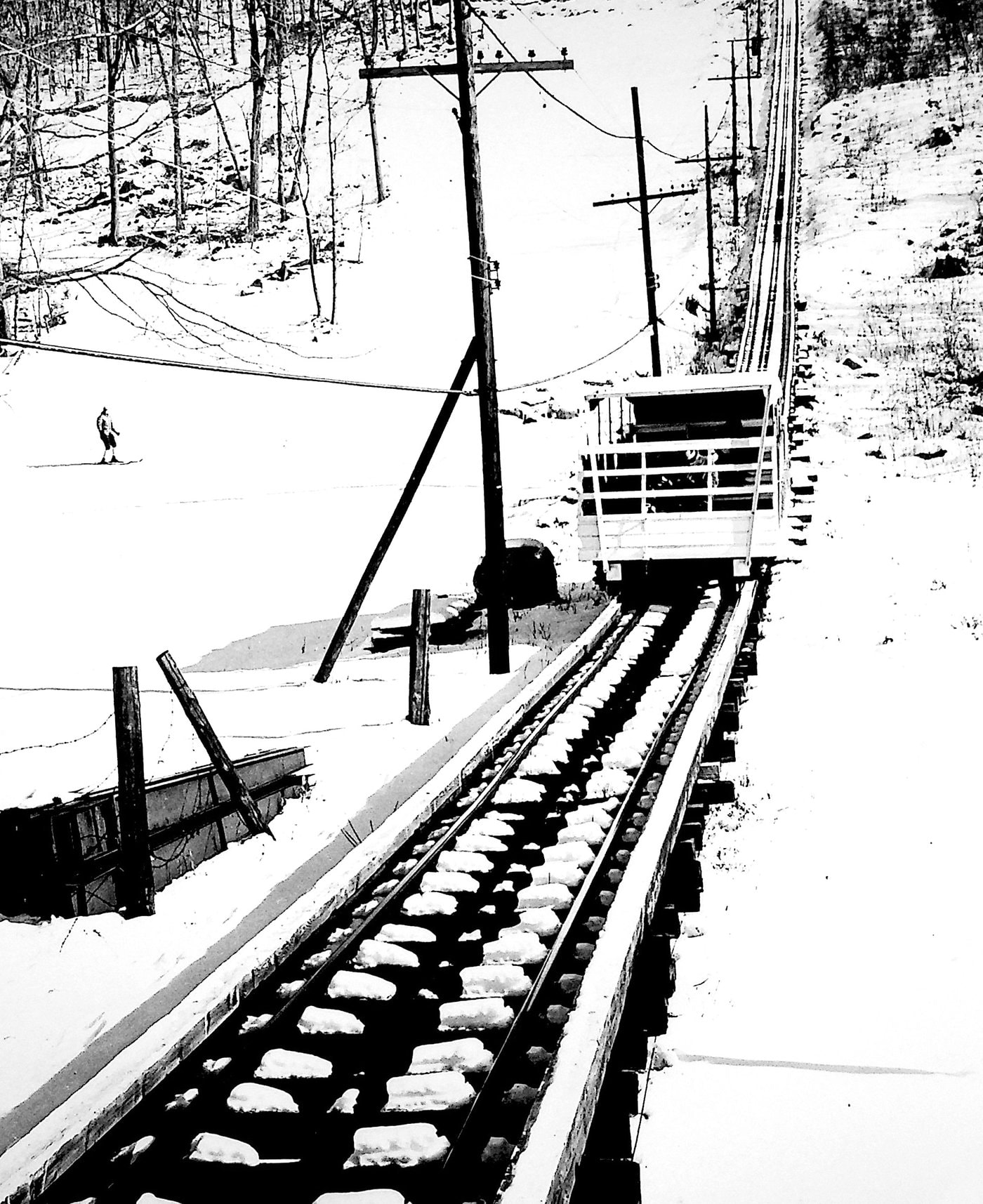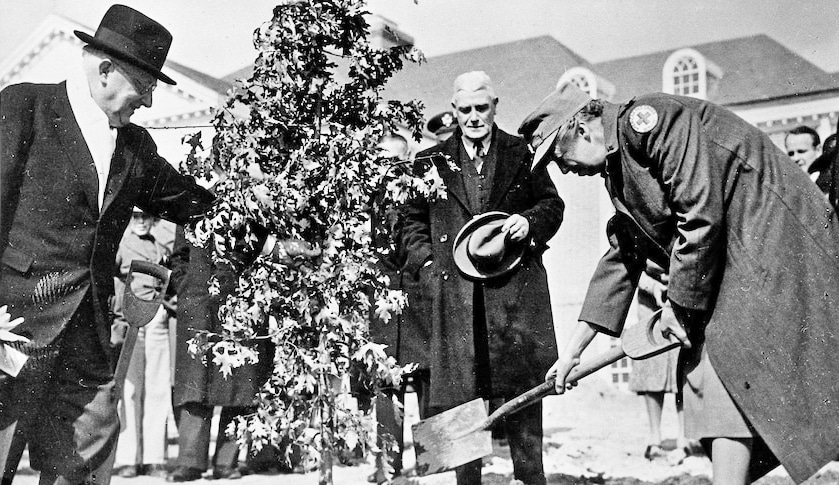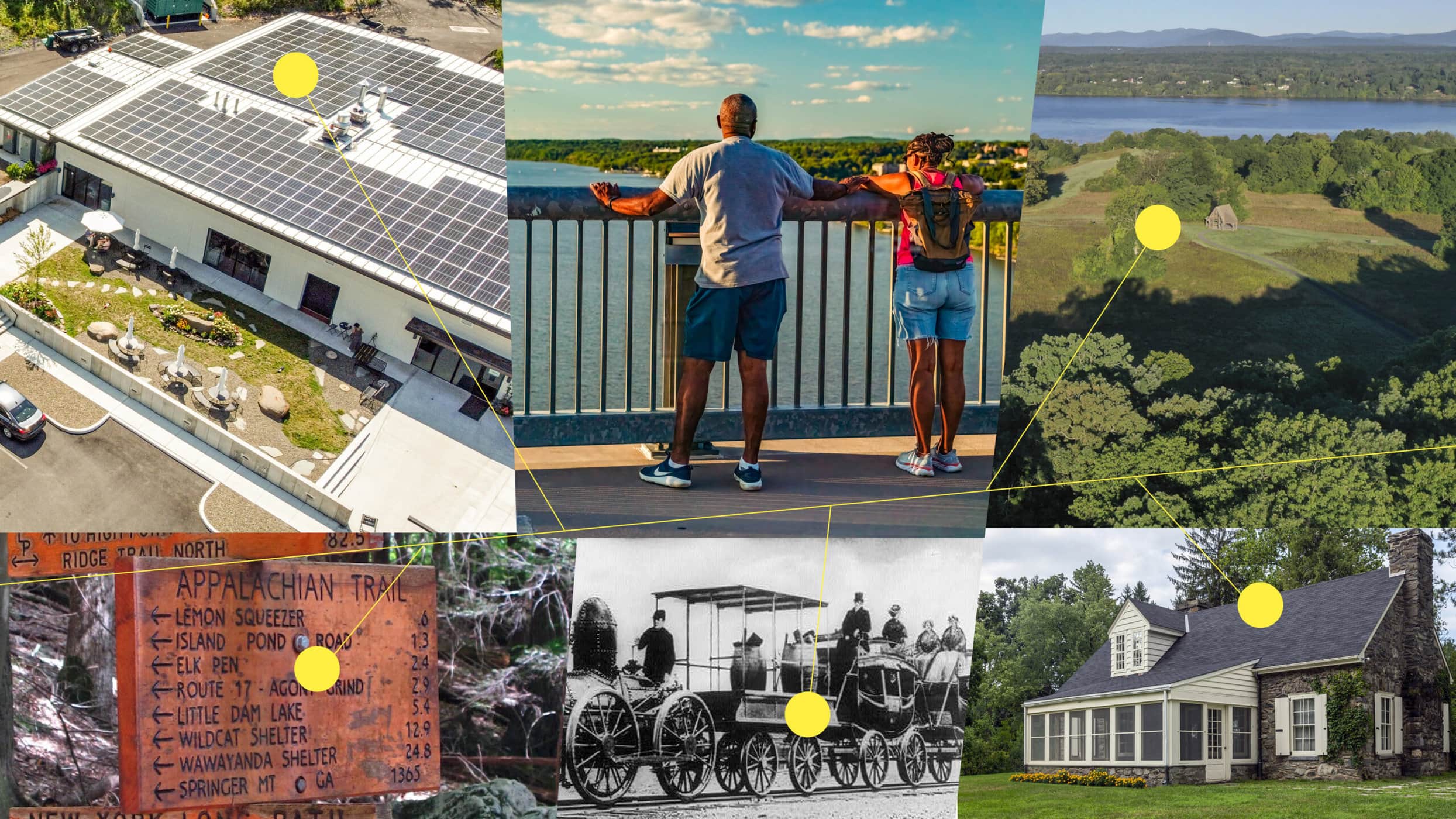The Hudson River has provided a way of getting from here to there since humans first appeared in the region. But it didn’t become a superhighway — capable of transporting large quantities of people and goods — until a vessel was specially crafted to handle its unique set of navigational challenges.
That vessel was the Hudson River sloop, the mainstay of the valley’s maritime commerce for nearly 200 years.
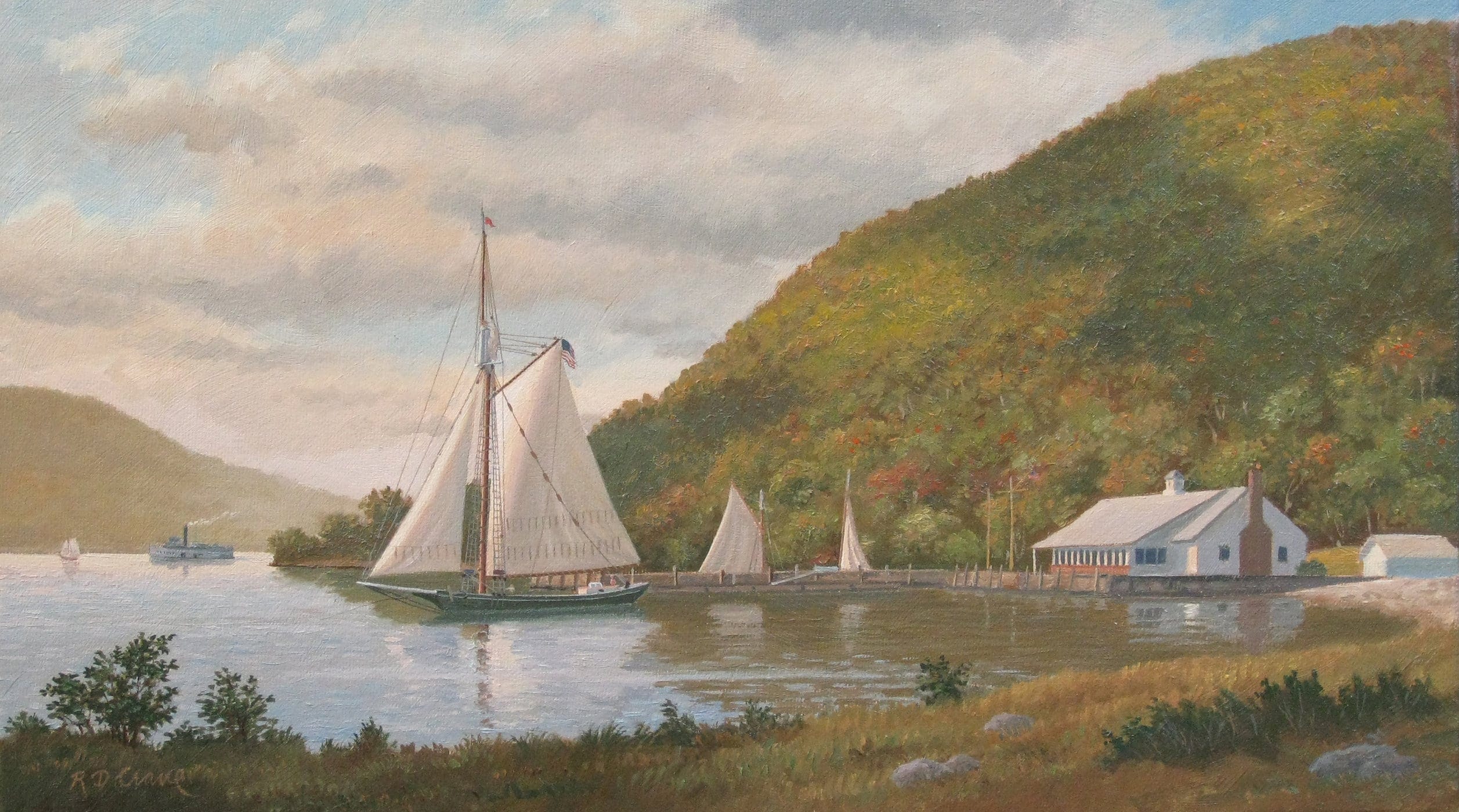
Like the Dutch ship, called a sloep, from which it was adapted in the 17th century, the Hudson River sloop featured a single mast, located near the front of the craft, from which up to three sails could be hoisted. It came into being to replace the high-sided, deep-draft vessels fine for crossing the Atlantic but unsuited for making headway through the Hudson’s changing tides and currents, unpredictable winds, and dangerous shallows.
To meet these obstacles, the adapted sloop featured low sides (for easier maneuverability), upright masts (allowing sails to be lowered more hastily when winds whipped up), and shallow drafts (for passing over shoals and sandbars). Even with these modifications, the captain and crew — usually up to five, often enslaved Black men until emancipation — had to have a sixth sense about changing conditions. Sudden gusts could tear a sail to shreds in seconds, while it wasn’t uncommon for sloops to run aground on the ever-shifting flats north of Hudson.
Between 75 and 90 feet long, Hudson River sloops were constructed of Hudson Valley woods — rot-resistant cedar for the sides, harder oak for the bottom. Built wide, they could carry as many as 25 or 30 passengers. Alternatively, they could haul 125 tons of commodities. That included everything from flour, hay, lumber, bricks, and bluestone on downriver voyages to Manhattan, and goods like crockery, salt, fabrics, and tobacco on homeward trips.
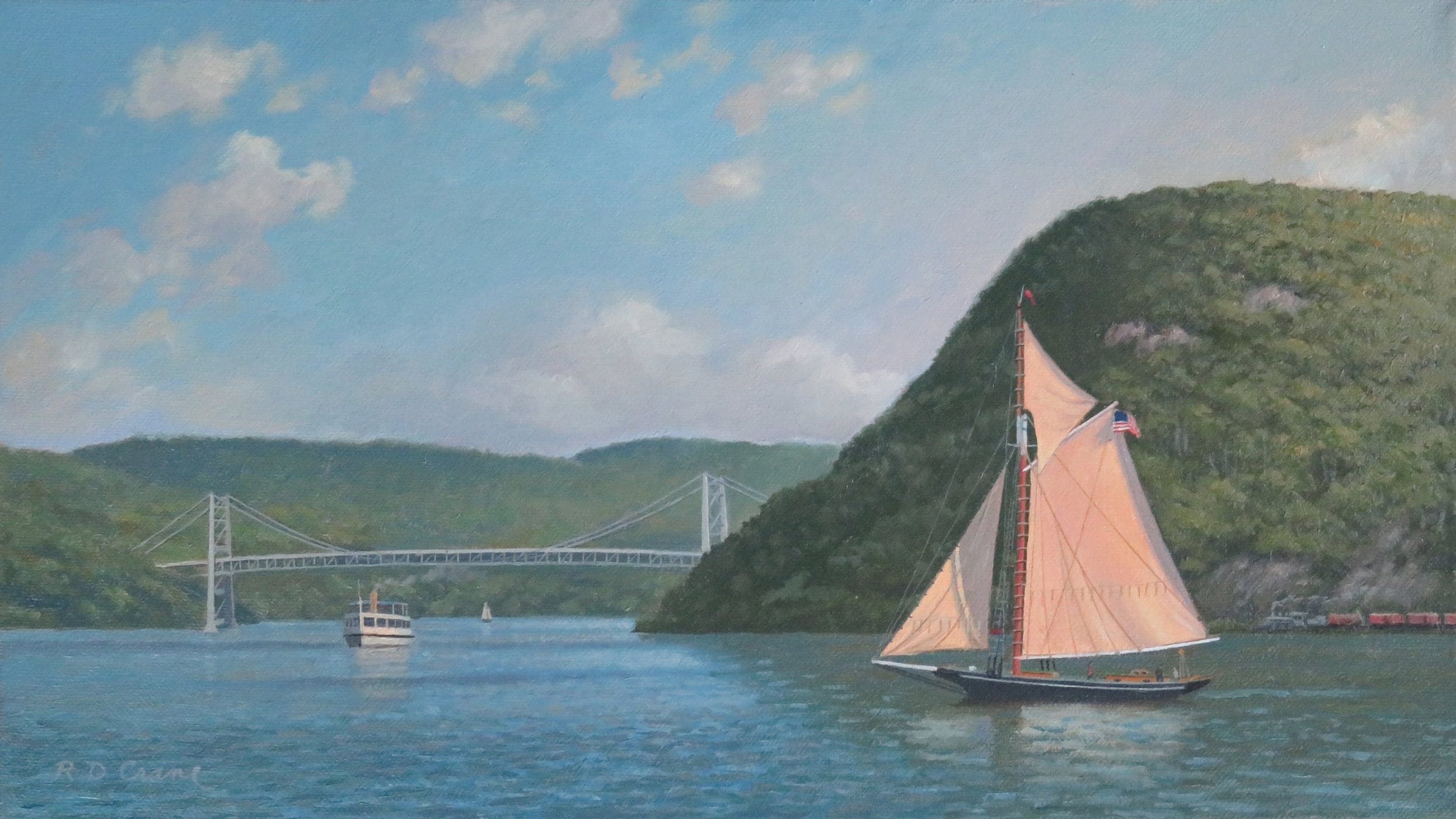
Most sloops had no set schedule; they shoved off when the hold was full and conditions were favorable. Often in the course of their voyage they were forced to anchor a spell or two when tide and wind combined to make forward movement impossible.
Writer James Fenimore Cooper offered a fascinating account of a trip via Hudson River sloop in his 1844 novel Afloat and Ashore. In it, he compares the que sera, sera ethos of traveling under sail to journeying on a steamboat, where time is of the essence.
“Passages [from Manhattan to Albany] were certainly made in twenty-four hours in the sloops, but these were the exceptions, a week being much more likely to be the time passed in the enjoyment of the beautiful scenery of the river,” Cooper wrote. “The vessel usually got aground, once at least, and frequently several times in a trip and often a day or two were thus delightfully lost giving the stranger an opportunity of visiting the surrounding country. The necessity of anchoring with a foul wind on every opposing tide, too, increased these occasions, thus lending to the excursion something of the character of an exploring expedition.”
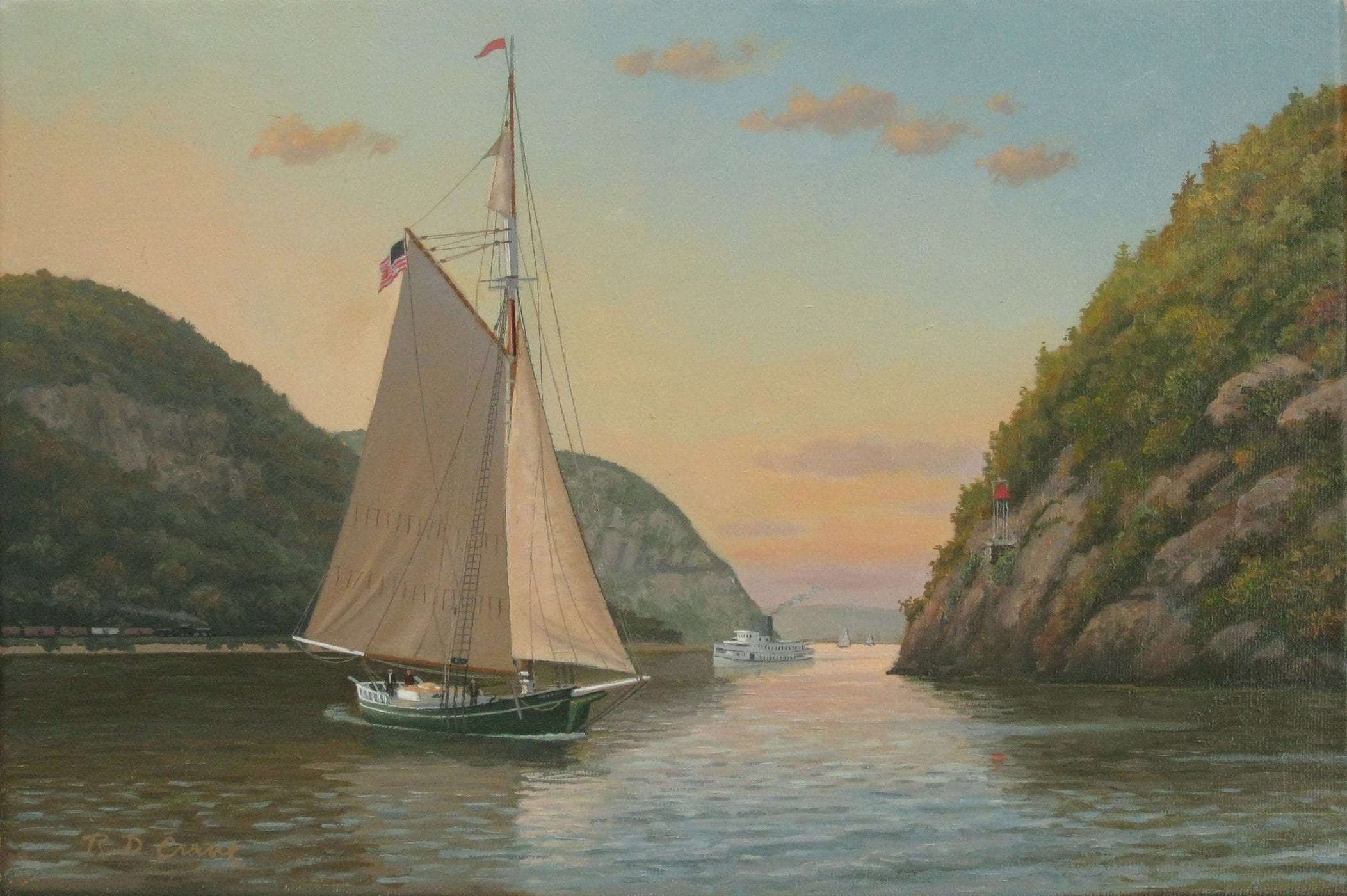
Two British travelers in the 1790s attested to the comforts these ships provided: “Our sloop was no more than seventy tons burthen by register; but the accommodations she afforded were most excellent and far superior to what might be expected on board so small a vessel.”
At their height in the 1830s, as many as 1,200 sloops sailed the river, coming from nearly every community along it, from New York City to Albany. Rockland County’s Nyack boasted the most, with 170 — followed by Marlboro, in Ulster County, with 112. But even places like New Hamburg and Chelsea, today two of Dutchess County’s most charming and off-the-beaten-track hamlets, served as port for half a dozen or more ships.
The sloops and their masters played an important role in providing for and supporting their communities. “The captains of these sloops were general agents for the whole town,” noted writer (and Scenic Hudson co-founder) Carl Carmer. “They sold a farmer’s produce in the city, bought him what he wished, and sailed back to deliver the purchases and the remaining money. They matched cloth for the housewives [and] took care of passengers young or old entrusted to them.”
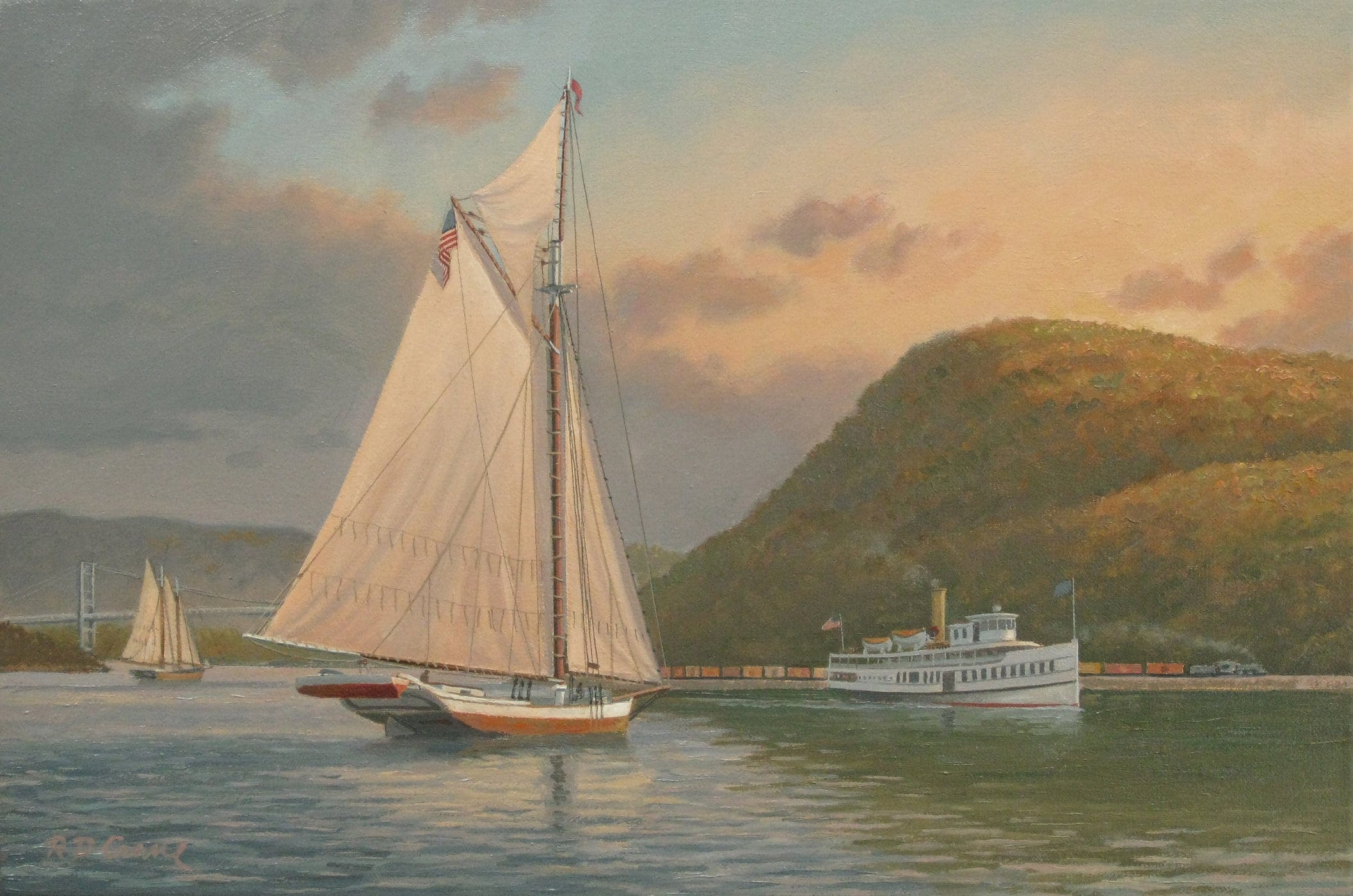
The many ships provided quite a spectacle. “They are painted with the most brilliant colors, and their white sails and variegated flags and streamers, present a beautiful addition to the scenery of the river,” wrote British traveler John Fitch in the 1830s. One of the grandest sights occurred off Dunderburg Mountain, at the southern gateway to the Hudson Highlands, where up to 50 sloops would wait for a favorable wind and tide to sail through the narrows upriver. When conditions permitted, they would cruise along in unison, commencing “a dignified peaceful parade of shining white sails more than a mile long,” wrote Carmer.
The steamboat and the advent of barge traffic (known as towboats) doomed the sloop’s queenly status in the second half of the 19th century, although some of the sail-powered vessels continued servicing local communities into the 1880s. What really did the boats in was the huge demand for goods and the need to meet that demand speedily, wrote William E. Verplanck, author of The Sloops of the Hudson, published in 1908.
The last sloops eventually were turned into barges, or retrofitted to be harbor lighters. Some ferried freight to shore from larger ships; others were left to rot and sink. As Verplanck concludes, the vessels “made a good fight…and with their defeat has disappeared one of the most picturesque features of the Hudson River.”
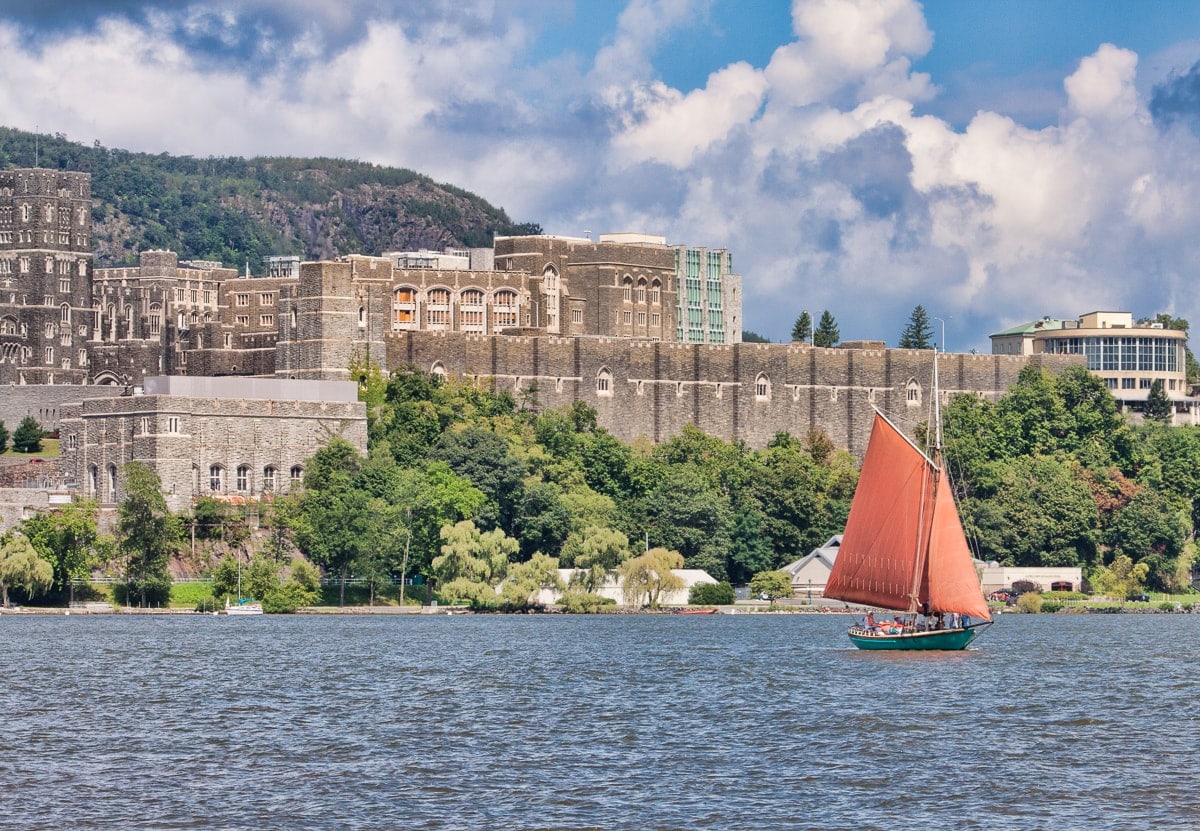
However, thanks to Verplanck’s book, two Hudson River sloops remain afloat. Folk singer Pete Seeger acquired a tattered copy of The Sloops of the Hudson in the 1960s. Soon after, Seeger convinced some friends to join him in honoring the legacy of these vessels that contributed so much to the valley’s past by constructing a new ship. The Clearwater would spur activism to protect the waters they sailed upon.
The Clearwater launched in 1969. A decade later, its smaller sister ship, the ferry sloop Woody Guthrie — also built under Seeger’s leadership — took to the water, with its home port in Beacon.
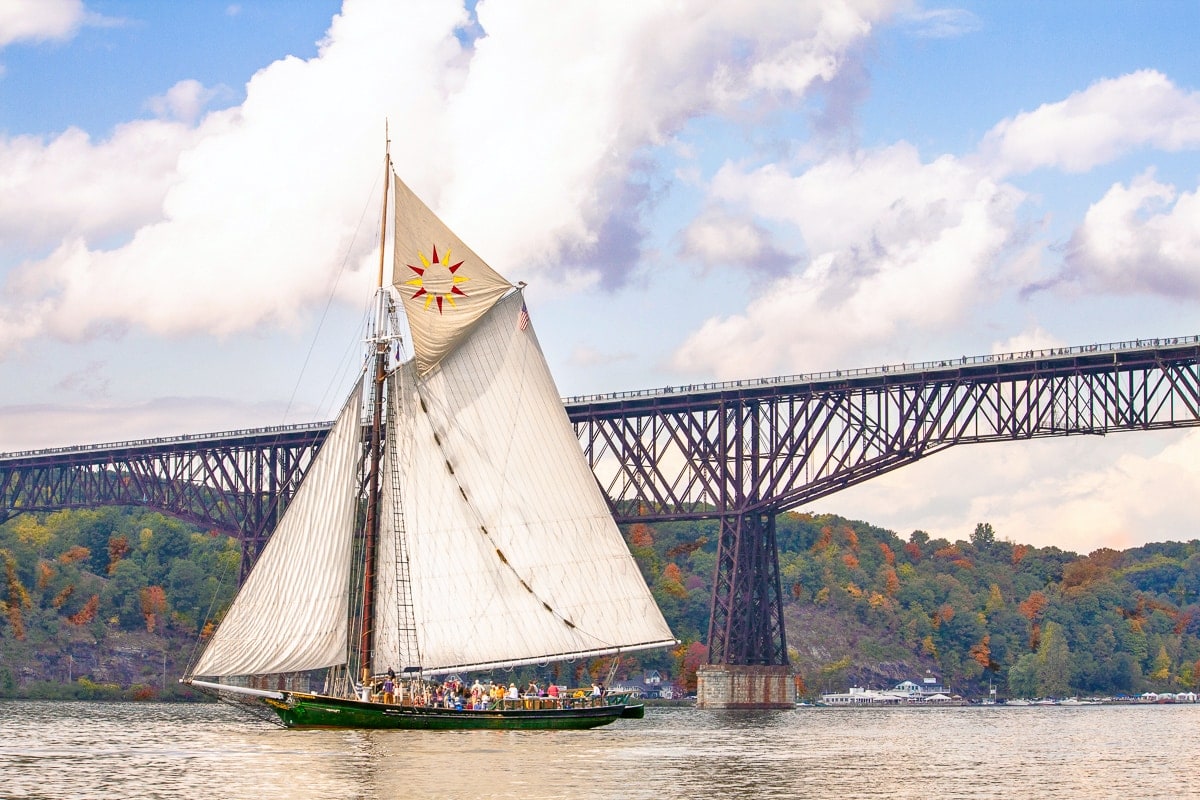
(A second ferry sloop, the Sojourner Truth, another brainchild of Seeger’s whose home base was in Ossining, was lost in a storm last fall, suffering the same, sad fate as many of its historic predecessors.)
A sail aboard either the Clearwater or Woody Guthrie is not only a bucket-list way to experience the Hudson River, but also a trip into a bygone era.
